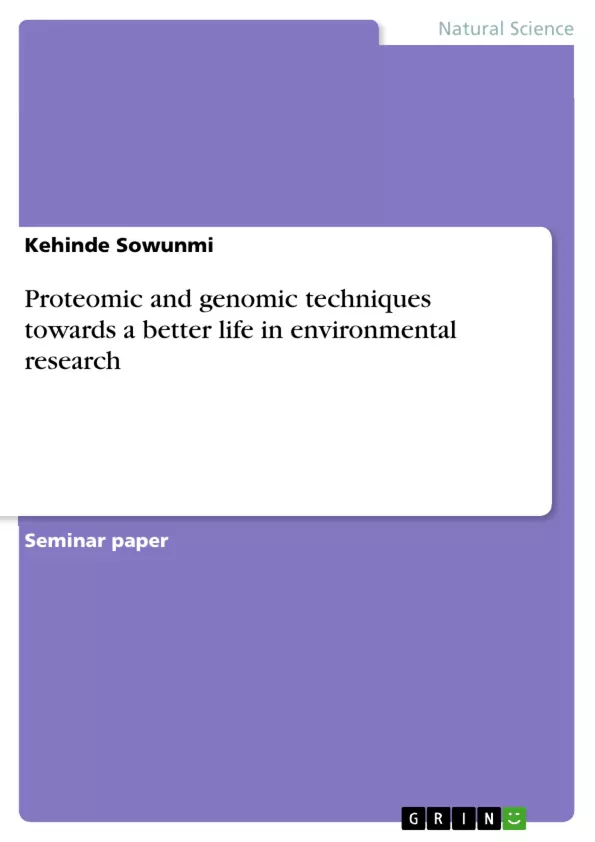Proteome is the entire set of proteins encoded by the genome and proteomics is the discipline which studies the global set of proteins, their expression, function and structure. Knowledge of proteins is thus crucial in understanding the mechanism of any biological process. Although advances in genome sequencing have allowed the identification of a number of open reading frames (ORFs), but this information is far from complete. On an average, about 40% of the gene sequences detected in the genomic databases code for proteins of hypothetical or unknown function
Inhaltsverzeichnis (Table of Contents)
- 1.0 INTRODUCTION
- 2.0 MOLECULAR TECHNIQUES OF PROTEOMICS AND GENOMICS
- 2.1 Proteomics techniques
- 2.2 Genomics Techniques
- 3.0 APPLICATIONS OF GENOMICS AND PROTEOMICS
Zielsetzung und Themenschwerpunkte (Objectives and Key Themes)
This work explores the field of proteomics and genomics, emphasizing the importance of these disciplines in understanding biological processes and the development of novel applications. It delves into the techniques used in these fields and their applications in various scientific domains.
- The crucial role of proteins in biological processes and the limitations of genome sequencing in fully understanding protein function.
- The complexity of proteomes and the challenges of analyzing protein dynamics and modifications.
- The potential of proteomics for disease diagnosis, prognosis, and drug development.
- The definition and applications of genomics, including the sequencing and analysis of genomes.
- The integration of environmental genomics, transcriptomics, and proteomics into ecological research.
Zusammenfassung der Kapitel (Chapter Summaries)
- 1.0 INTRODUCTION: This chapter introduces the concepts of proteomics and genomics, highlighting the historical context and the crucial role of proteins in biological functions. It emphasizes the limitations of genome sequencing in understanding protein function and the complexity of analyzing protein dynamics and modifications.
- 2.0 MOLECULAR TECHNIQUES OF PROTEOMICS AND GENOMICS: This chapter delves into the specific techniques used in proteomics and genomics. It discusses various methods for analyzing proteins and genomes, providing an overview of the tools and methodologies employed in these disciplines.
- 3.0 APPLICATIONS OF GENOMICS AND PROTEOMICS: This chapter explores the diverse applications of proteomics and genomics in various scientific domains. It discusses the use of these approaches in disease diagnosis, prognosis, drug development, and ecological research. The chapter emphasizes the potential of these fields to advance our understanding of complex biological systems.
Schlüsselwörter (Keywords)
The key terms and concepts explored in this text include proteomics, genomics, protein function, protein dynamics, environmental genomics, transcriptomics, disease diagnosis, drug development, and ecological research. These terms represent the core focus of the work and provide a framework for understanding the relationships between proteins, genes, and their impact on various biological processes and environments.
- Arbeit zitieren
- Master Kehinde Sowunmi (Autor:in), 2019, Proteomic and genomic techniques towards a better life in environmental research, München, GRIN Verlag, https://www.hausarbeiten.de/document/510600


